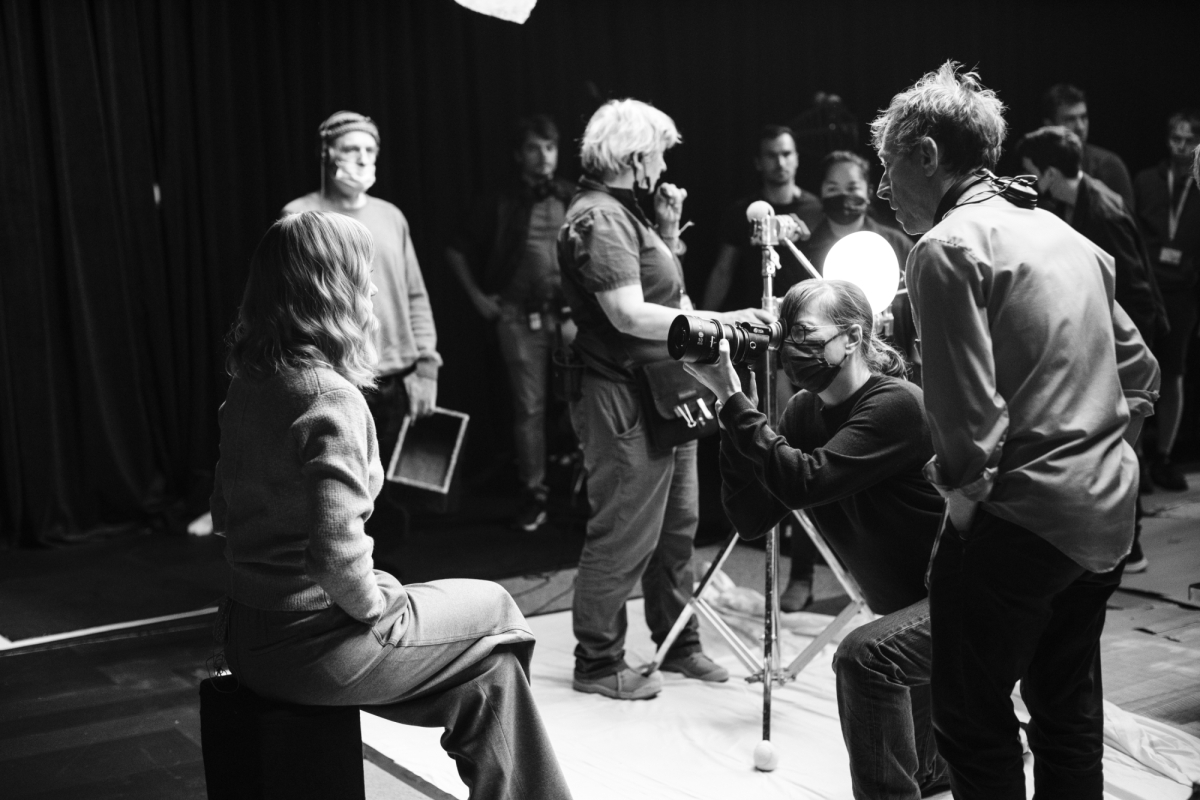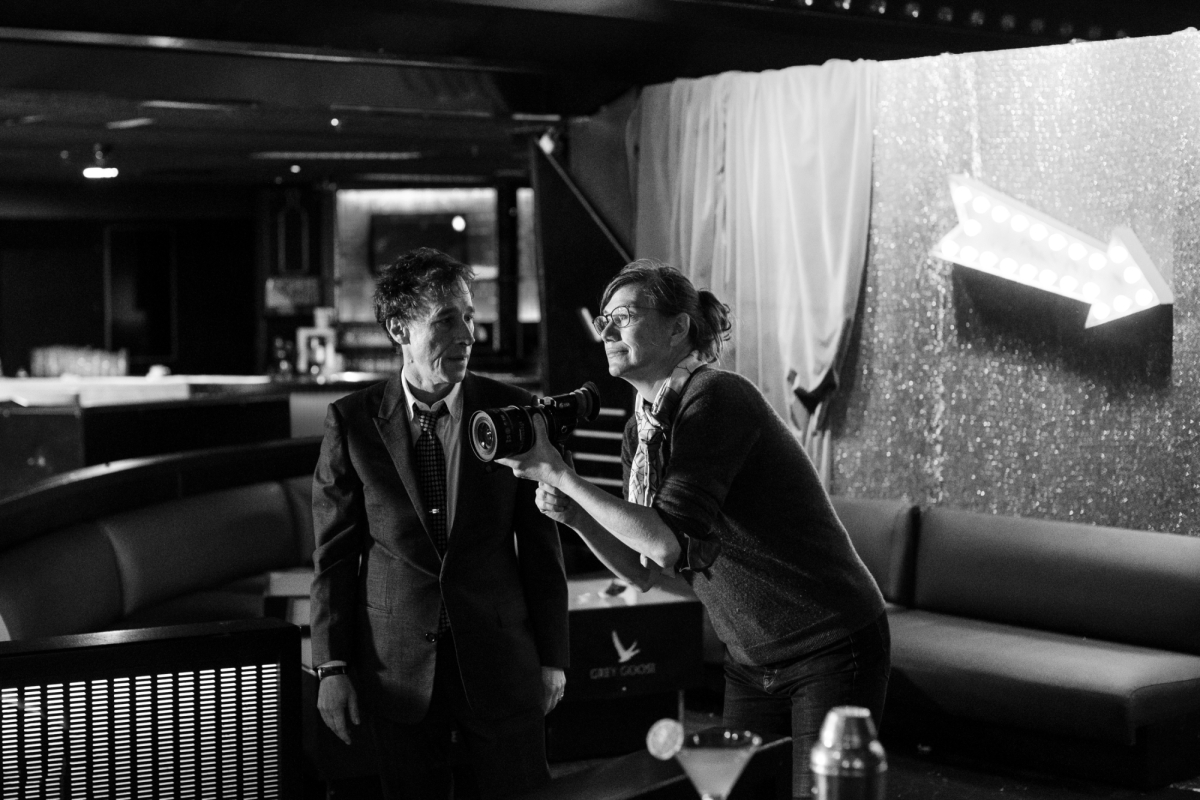DP Josée Deshaies used KODAK film in the hybrid/mixed-media production of Bertrand Bonello's time-travelling drama 'La Bête'

Image by Carole Bethuel.
DP Josée Deshaies factored analog film into the hybrid/mixed-media production of Bertrand Bonello's time-travelling dystopian drama La Bête, notably using KODAK 35mm to infuse the historic portion of the storytelling with sumptuous elegance and brooding emotional atmosphere.
Set in three distinct time periods – 1910, 2014 and 2044 – but told in non-linear fashion, the romantic sci-fi thriller deals with the quest for love and the elimination of emotion via DNA purification, as human existence becomes dominated by artificial intelligence (AI).
In 1910, the protagonists, married Gabrielle and suave singleton Louis, flirt with one another during a party at a belle epoque art salon in Paris. Yet, despite their mutual attraction, Gabrielle reveals she cannot be involved in a relationship due to a catastrophic premonition that threatens her own annihilation. This, and a mass flooding event with explosive moments, curtails their romantic inclinations

DP Josée Deshaies on-set of LA BÊTE. Photo by Carole Bethuel.
Over 100 years later, in Los Angeles 2014, the story finds Gabrielle as an aspiring model/actress and Louis an angry incel on the verge of violence, as he stalks Gabrielle from a Downtown nightclub to her home in the Hollywood hills. In 2044, Gabrielle has become a menial worker in a world where AI reigns over society and personal isolation is the norm. She meets Louis again at a DNA purification center, where they are both about to undergo a process that cleanses humans of distracting emotions.
Co-written by Bonello with Guillaume Bréaud and Benjamin Charbit, La Bête is loosely based around American-British author Henry James's 1903 novella The Beast in the Jungle, concerning a man who is seized with the belief that his life will be defined by some sort of catastrophic event that is lying in wait for him as if it were a beast in the jungle.
The film stars Léa Seydoux as Gabrielle and George MacKay as Louis, with Guslagie Malanda and Dasha Nekrasova in supporting roles. La Bête had its world premiere at the 2023 Venice International Film Festival, where critics praised Bonello's first outing in the sci-fi genre, the nuanced performances of the cast, and Deshaies's atmospheric cinematography.

DP Josée Deshaies on-set of LA BÊTE. Photo by Carole Bethuel.
Deshaies is a regular collaborator with Bonello, with credits including The Pornographer (2001), On War (2008), House of Tolerance (2011) and Saint Laurent (2014), which were all shot on 35mm film.
"I have known Bertrand since 1996, and over the years we have collaborated on at least a dozen shorts, longform and experimental films together," says Deshaies whose credits with the director include The Pornographer (2001), On War (2008), House of Tolerance (2011) and St Laurent (2016), which were all shot on 35mm film.
"I was familiar with Henry James and his work and had fantasized about a director calling me about one of his other short stories, The Figure in the Carpet (1896), for many years. So I was thrilled when Bertrand told me about his adaptation of The Beast in the Jungle.
"While La Bête is a sci-fi movie, that's a genre that neither of us had shot before. Bertrand's pitch to me was that it was essentially about the history of human sentiments – loneliness, fate and especially love between people – and how feelings change over the course of time.

Image by Carole Bethuel.
"I thought this was wonderful, as we live in an age where we don't speak enough about those things. I really liked the narrative scale, how the story was spread across 124 years of the past, present and the future, and took onboard Bertrand's desire for it to be sober and lowkey in its visual storytelling.
"Sci-fi movies tend to be super technological, super slick and sophisticated, or post-apocalyptic, and ours was neither of these. This film was more about understanding sentiments, the emotional engagement and the disconnection between the characters after AI takes everything away."
Deshaies adds, "Bertrand's films always reflect his love of cinema and its history. So with this in mind, I decided to shoot using old and new technologies – film, digital and mixed media sources, like smart phones and surveillance cameras – and to switch between aspect ratios for the different eras, but keeping the transitions as subtle as possible."

Image by Carole Bethuel.
For the story that occurs in 1910, a third of the movie's running length, Deshaies says, "shooting on 35mm film in classic 1.85:1 aspect ratio was the obvious choice."
As the 2014-based story deals with humans being observed through new media – cell phones, computer screens and security cameras – she switched to digital and mixed media sources, framing in 16:9 to echo the typical screen size of modern TV and digital devices.
The 2044 section, dealing with a dystopia in which humans and their feelings have been crushed by AI, she opted to stay using digital cameras, but with image size constrained to 1.33:1.
With regards to visual references for the 1910 story, Deshaies points to director Max Ophüls La Ronde (1950) and The Earrings of Madame De... (1953) (both shot by DP Christian Matras), plus The Age of Innocence (1993, dir. Martin Scorsese, DP Michael Ballhaus ASC), as being melodramatic masterpieces and close to her heart for their elegant and expressive depictions of seduction, passion and affection, through color and smooth crane, dolly and tracking camera movements.

DP Josée Deshaies on-set of LA BÊTE. Photo by Carole Bethuel.
She reveals that the 2014 section was inspired by ‘slasher' films, self-filmed footage posted online by a notorious incel (now no longer available). Feeling that towns, cities and people will probably look the same in 2044, she shot just digital and went with her own visual intuitions using a closed-down, more claustrophobic frame.
Filming on La Bête took place around Paris in late August 2022, and at a villa in the south of France dressed to appear as Los Angeles in 2014. Production also took place over two nights in Downtown Los Angeles, where the car work was shot, before production wrapped in October.
Deshaies shot the 1910 segment with an ARRICAM LT 35mm film, using Leitz Summilux-C and an Angènieux zoom lenses. She used an ARRI Alexa 35 with the same lenses for the 2014 and 2044 portions. The camera and lens package was supplied by TSF in Paris.
"I shot with the ARRICAM LT 35mm film camera as it is a great workhorse ¬– compact and lightweight, and ideal for sync-sound. The ARRI Alexa 35 has more subtlety in the color palette than previous cameras," says Deshaies.

Image by Carole Bethuel.
"Bertrand does not like weird cinematographic images, and I never shoot anything strange for him in-camera. I really like the Summilux-Cs as they don't cheat on you or add too much character to the image – they are faithful to what I see with my eyes, whether I'm shooting film or digital. Colors and skin tones retain their natural look-and-feel, and the pictures feel human, but without being too sharp or flat. Also, the Summilux-Cs are fast and compact in size, which helps efficiency.
Deshaies used just KODAK VISION3 500T Color Negative Film 5219 to capture the 1910 portion of the film, exclaiming, "With its 500ASA rating I knew I could use the 500T for everything. I could shoot brightly-lit scenes by using NDs and rating at 320ASA, and knew the 500T would have enough exposure latitude to capture darker scenes, such as during the flood. The rendition of the overall color palette and details in the blacks are quite amazing, and it gave us a suitably soft, sensuous and sumptuous look.
"It's much more economic and easier to manage the logistics on a daily basis when you just use one emulsion. When you have different types of film stock, it's harder to use-up the short-ends before you wrap."
Film processing was done by Hiventy in Paris, with the 4K scanning and final color grade done by Jérôme Cloutier at Mels in Monreal, Canada.

DP Josée Deshaies on-set of LA BÊTE. Photo by Carole Bethuel.
Deshaies operated during shoot, supported by 1st AC Anthony Huneault, shooting from the dolly or tripod, and performing simple pans or locked-off shots in-keeping with the sober and restrained approach. Loïc Andrieu operated Steadicam, with Gaston Grandin working as key grip, and Marianne Lamour as the gaffer.
"We lit the film with all sorts of sources – Tungstens, fluorescents, neons, HMIs and LEDs," she remarks. "LEDs are very useful, but when I shoot on film, I find they have bad color rendition on the actors. So I tend to use LEDs in the background, and light skin or faces with with Tungsten, as that always look good.
"The approach was to use light, shade and color to heighten the emotion of the drama, whilst generally showing restraint. However, there were multiple nightclub scenes, and reflecting the energy, music and psychological atmosphere for each of those different settings, through blue, green, magenta, yellow and black light, was a huge challenge that we spent months preparing for. I have to thank Marianne, my ‘rainbow' gaffer, and her team for pulling those off."
Deshaies concludes, "I love shooting with Bertrand. He works hard and trusts my eyes and judgements. He is always calm and gently-spoken, which creates a lovely atmosphere amongst the cast and crew. It was great to include 35mm film into a production that was technically like a history of the different image-making devices you can use, and it played a perfect part in the arc of the visual storytelling."